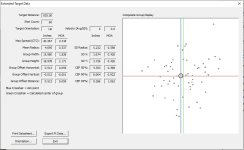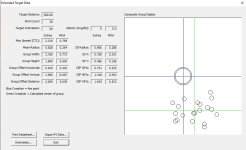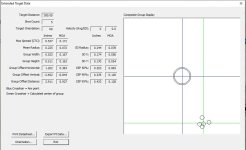What's the best way to claim accuracy? Smallest or largest few shot groups fired?
accuracy of the rifle or accuracy of the shooter? I don't really consider anything less than a 20 round group or composite to show much of anything, Five shot groups show me what can happen if the moon and stars all align and the hummingbird of happiness drops a load on the target. Ten Shot groups show me the likelihood of the load/barrel throwing a flyer. Twenty shot groups show me what can be, Sixty shot composites from a match show me the accuracy of both the gun and myself.
All three targets shot with same rifle and same load.
835 yards sixty shots real world conditions, 300 yards twenty shots, again real world conditions, 300 yards five shots on a perfect windless cloudy morning doing load testing. The 60 round target shows me how much I was off on my wind/mirage. The second shows me the same. The five shot group shows me what the rifle is capable of if that hummingbird comes along. My normal 5 shot group at 300 is around 1.25 - 1.5 inches. That .17 MOA group was hummingbird poop and pure luck which is why I dismiss 5 shot groups for anything except rough load testing
Notice how real world mirage and wind can totally mess it all up and the farther out the more those little errors add up
edit Savage 12 action, Criterion 6BR 8 twist, Boyds stock, glass and pillar bedded, Berger 105 Hybrids, Varget powder, Peterson brass, CCI 400 primers. Loaded on a Lee turret press
Attachments
Last edited:



